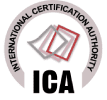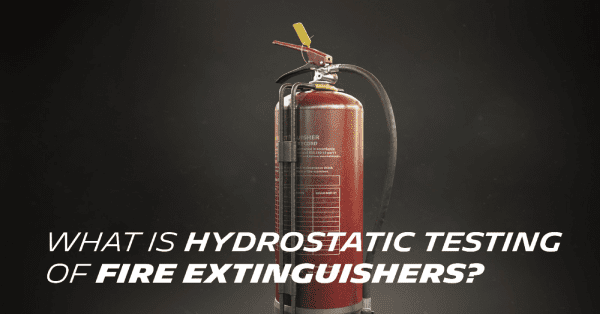What Is Hydrostatic Testing of Fire Extinguishers

Why are Inspection, Servicing, and Certification of Fire-Fighting Systems Important
January 24, 2023
Benefits of Scheduling Fire Protection Maintenance and Inspection
January 31, 2023If you manage and operate a large building or facility, there are several components to keep an eye on. From normal maintenance to customized components such as your fire suppression system, it might feel like you always have some type of maintenance or test scheduled. However, there is one important test – it is hydrostatic testing for your fire extinguishers. Below mentioned is all you need to know about hydrostatic testing, including how regularly they need to be tested.
What is hydrostatic testing of fire extinguishers?
Hydrostatic testing is carried out on rechargeable fire extinguishers to assess the cylinder’s ability to hold pressure. The test will also check for leaks and overall strength. It is undertaken to make sure the fire extinguisher is safe and effective in the event of an emergency. Cease Fire Solutions is a reputable fire protection company in Doha that carried out hydrostatic testing from trained professionals. For more information, give us a call.
How often do fire extinguishers need hydrostatic testing?
As mentioned above, hydrostatic testing is needed for all kinds of rechargeable fire extinguishers. Generally, hydrostatic testing is needed:
Once every 5 years for carbon dioxide, wet chemicals, water, Foam etc.
Once every 12 years for dry chemical fire extinguishers
To ensure your fire extinguisher tests are on schedule, it is a great idea to survey your facility and find out what type of fire extinguishers you have. While most buildings use common ABC fire extinguishers, which is a type of dry chemical fire extinguisher, there is a chance to have different types of extinguishers installed in your building, especially if your workplace presents unique risks.
Types of fire extinguishers that require hydrostatic testing:
Commonly, there are five types of fire extinguishers. Every one of them is built for a specific use to extinguish different flammable materials.
ABC fire extinguishers, which are the most common type of fire extinguisher can be used on trash, wood, paper, liquid, and electrical fires. They should be hydrostatically tested annually from the date of manufacture.
Water fire extinguishers are used on trash, wood, paper fire; and should be hydrostatically tested annually from the date of manufacture.
Foam Fire extinguishers are used on flammable liquid such as petrol, diesel fires and shoul be hydrostatically tested annually from the date of manufacture.
“D” rated fire extinguishers are used on flammable metal, which should be hydrostatically tested annually from the date of manufacture.
“K” rated fire extinguishers are used on commercial cooking equipment. They should be hydrostatically tested once in every five years from the date of manufacture.
Steps involved in hydrostatic testing for fire extinguishers
Many building managers are aware of the routine fire extinguishers tests and inspections. However, since hydrostatic testing is not carried out often, not many are aware of it. It is crucial that undertaking hydrostatic testing for fire extinguishers should be carried out in a proper testing facility, by a reliable fire protection company like Cease Fire Solutions. To find out more information, please do not hesitate to speak to our team.
If you are curious about what happens on a hydrostatic test, below-mentioned are the basic steps:
Carry out a visual inspection of the fire extinguisher
Before a hydrostatic test is carried out, it needs to be inspected first. Start by inspecting the extinguisher’s exterior to identify anything that could potentially compromise the cylinder’s integrity like deep dents to corrosion and much more. Anything that cannot be safely tested should be removed from service.
Safely discharge the extinguisher
Once the visual inspection is complete, it is time to safely discharge it, so your hydrostatic testing expert can inspect and evaluate the interior of the cylinder as well. The hose of the fire extinguisher is taken out and replaced with a hydro test adapter, only then the extinguisher can be fully discharged. Once it is empty, the technician will remove the valve and blow out any trace of an agent with an air hose.
Through inspection of the fire extinguisher’s interior
Once the fire extinguisher has been fully discharged, it is time to inspect the interior. The hydrostatic expert will look for any defects in the cylinder that would suggest that the extinguisher cannot maintain pressure. If any flaws are identified, the fire extinguisher will be permanently removed from service.
Undertake the hydrostatic pressure test
If the fire extinguisher passes the visual and interior inspection, it can be tested safely. According to NFPA 10 (National Fire Protection Association), it requires the use of water for all hydrostatic tests, and the cylinder must be tested with a enclosed water jacket/ protective cage or behind a shield to ensure the safety of the technician. Hydrostatic testing is carried out to make sure that the fire extinguisher can still withstand its pressure rating. During the test, the fire extinguisher is filled with water above the pressure rating. At that point, the expert will monitor the cylinder and look for any drop in pressure. If there is a drop in pressure, it indicates that the fire extinguisher has a possible leak, and it should be removed from service permanently. Keep in mind, if a fire extinguisher fails the test, it cannot be used again.
Putting it back into use
If the fire extinguisher passes the test, it will be drained, cleaned, and dried. The disposable parts will be replaced by the technician and they will be fitted with new ones. Once the fire extinguisher has been refilled, the technician will replace the service collar, labels, and ID, and repressurize it, including installing the hose and tamper seal. From this point onward, your fire extinguisher will be ready to use.
Hydrostatic testing is an integral component of your building’s fire safety maintenance program. But with the test carried out annually, it can be hard to keep track. If it’s been a while since you last checked the label on your fire extinguisher, now might be the correct time to have a look. Another great alternative is to partner with a trusted fire protection company like Cease Fire Solutions for regular maintenance to ensure you never miss a test. If you are looking for certified and experienced hydrostatic testing professional or you need routine maintenance for your fire extinguishers, Cease Fire Solutions is here to help.
To find out more, or to schedule a test, please do not hesitate to contact our team today.
Address
PO Box: 37677, Zone No. 57,
Street No. 3, Building No. 79,
Industrial Area, Doha, Qatar.





